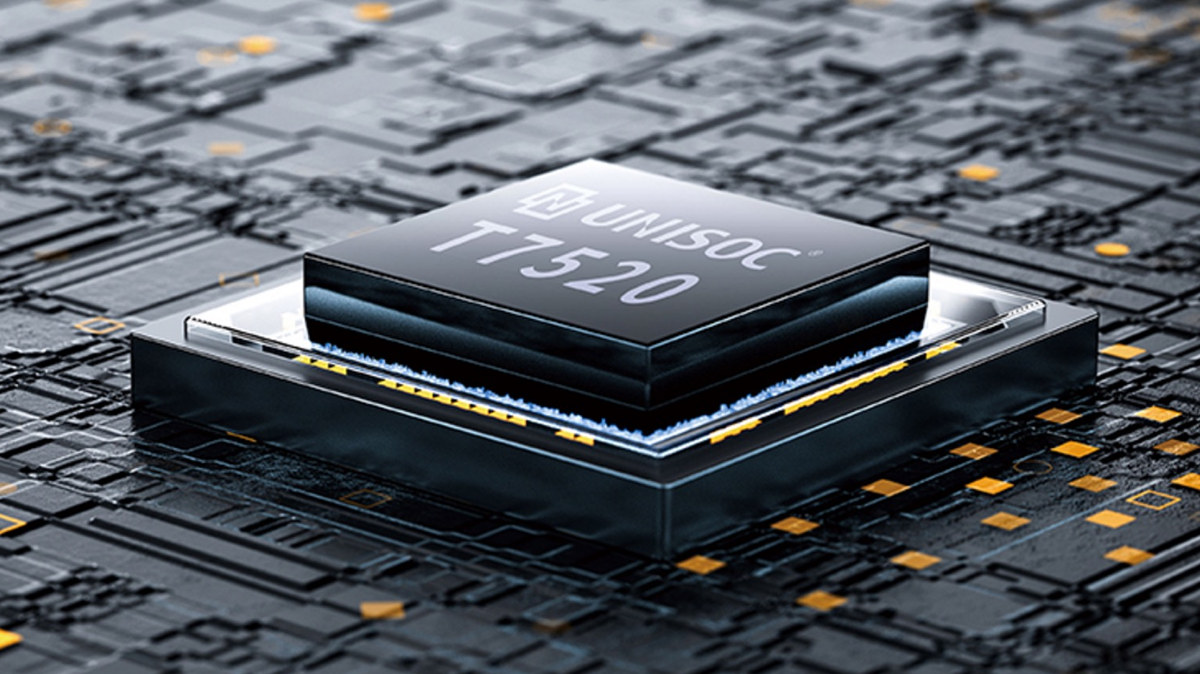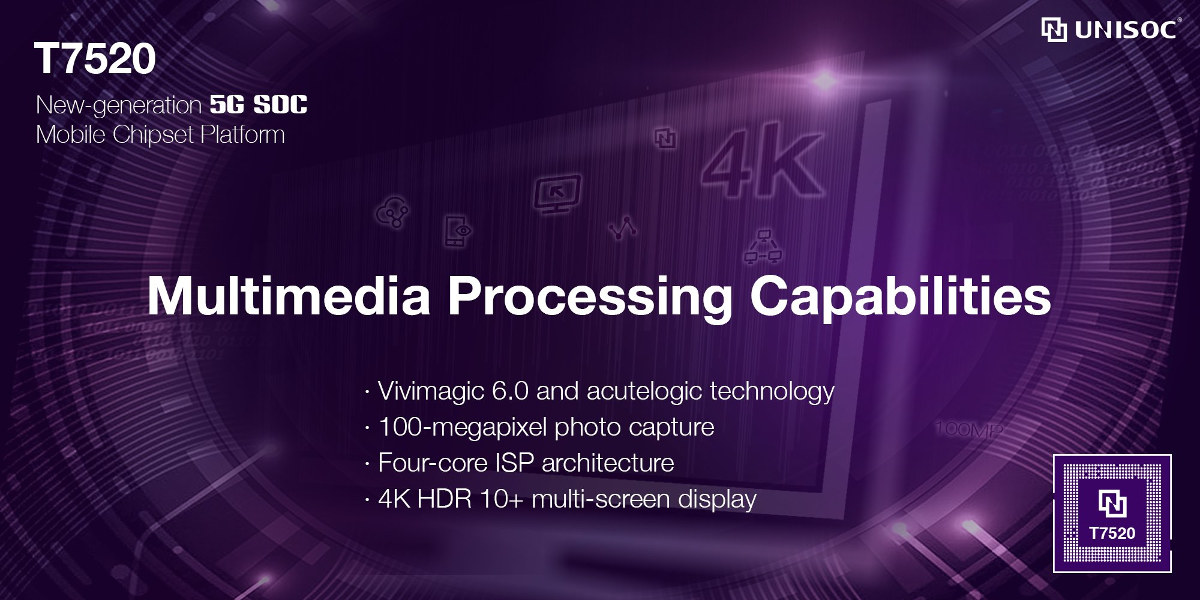UNISOC has launched its second-generation 5G mobile SoC with T7520 processor manufactured with a 6nm EUV process technology and equipped with four Arm Cortex-A76 cores, four Arm Cortex-A55 cores, as well as an Arm Mali-G57 GPU, and the company’s Makalu 5G platform.
T7520 processor is said to support “coverage enhancement for any application scenario, by allowing carriers to deploy 5G on their existing 4G spectrums” (aka NSA = Non-stand Alone). and is optimized for use on 500 km/h high-speed railway.
Highlights of the processor include:
- Advanced 6nm EUV process technology with extremely high lithographic resolution and a better balance between cost, performance and power consumption. Compared to the previous 7nm process, the new process has an 18% improvement in density of transistors and reduces power consumption by 8%.
- Lower power consumption made possible by the improved process mentioned above as well as an improved low-power consumption architecture and AI-based power regulation technology. For instance, T7520 can reduce power consumption by up to 35% for some data business scenarios.
- 5G coverage enhancement for all scenarios thanks to support for 5G NR TDD+FDD carrier aggregation and uplink and downlink decoupling which can enhance coverage by more than 100%. UNISOC T7520 supports the Sub-6GHz band, NSA/SA dual-mode networking, and 2G through 5G networks.
- AI capabilities – T7520’s NPU offers a 50%+ energy efficiency increase, expressed in TOPS/W compared to the previous generation product. •
- Multimedia processing capabilities
- Better Camera support thanks to UNISOC’s 6th-generation Vivimagic solution and second-generation FDR (Full Dynamic Range) technology, a dedicated AI accelerator, and upgraded four-core ISP architecture to provide an ultra-high resolution of 100MP and multi-camera processing capability.
- Display support for up to 120 Hz refresh rate, up to 4K resolution with HDR10+ high-dynamic range technology
- Financial-grade security – Second-generation Integrated Secure Element solution delivering 100% improvement in computing performance and support for computing-intensive security scenarios such as encrypted video calls.
You may wonder which “previous generation” 5G mobile platform UNISOC is talking about, as AFAIK the company only announced IVY510 5G Modem previously, not a complete SoC/platform.
But about two days ago, UNISOC announced Hisense F50 would launch a 5G smartphone based on T7510 platform featuring V510 5G modem (IVY510) and Tiger T710 application processor, so all comparisons above are made against T7510.
UNISOC does not have any product page for T7520, but you may find more information in the announcement and on Twitter.

Jean-Luc started CNX Software in 2010 as a part-time endeavor, before quitting his job as a software engineering manager, and starting to write daily news, and reviews full time later in 2011.
Support CNX Software! Donate via cryptocurrencies, become a Patron on Patreon, or purchase goods on Amazon or Aliexpress






